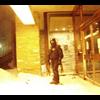The Norwegian Mountain Code ("Fjellvettreglene" in norwegian)
-
Lignende innhold
-
- 18 svar
- 1 177 visninger
-
- 12 svar
- 1 091 visninger
-
- 13 svar
- 3 315 visninger
-
Mountain Equipment soveposer...holder ikke mål. Billig i Sverige, men du må kjøpe flere kuldegrader nedenfor tenkt der du skal sove. 1 2
Av squidman,
- 49 svar
- 2 468 visninger
-
- 17 svar
- 1 987 visninger
-
-
Hvem er aktive 0 medlemmer
- Ingen innloggede medlemmer aktive



Anbefalte innlegg
Bli med i samtalen
Du kan publisere innhold nå og registrere deg senere. Hvis du har en konto, logg inn nå for å poste med kontoen din.